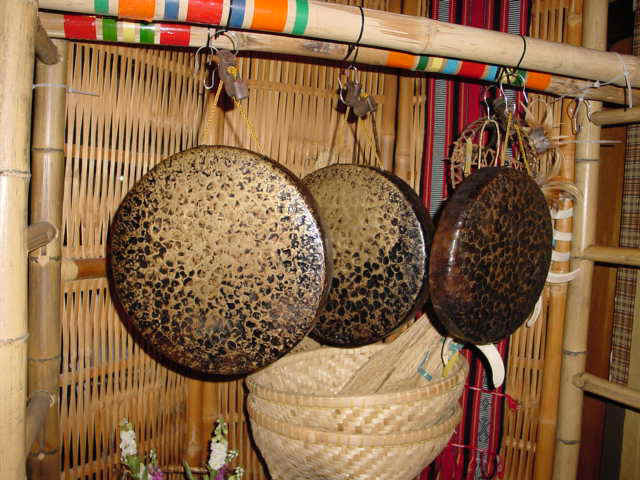The music from the
Philippines has its origins in a number of musical traditions: indigenous
music, Asian, Spanish, Latin American, and American music.
A lot of the
traditional musical styles are similar to that of Indonesia and Malaysia. One
of the main styles they’re known for is gong music. There’s a couple different
kinds of gong music: one is called gangsà, or flat gongs. It’s usually played
in groups is the Islamic and animist communities of the southern regions of the
country. The other kind is kulintang, which is a racked gong chime. These are
also played in ensembles and are distantly related to he gamelan music of
Indonesia.
Spanish music also
has a great influence on their music, which is understandable considering that
the Spanish controlled the Philippines for over three centuries. Many folk
tunes are borrowed from the Spanish but with Tagalog or other local languages
used for the lyrics. Rondalla is a type of music with origins in the Iberian
Peninsula and uses instruments like guitars, double basses, mandolins, and
drums. The Harana and Kundiman are lyrical songs that grew in popularity during
the 1920s. It starts out in a minor key, switches to a major one halfway
through and is based on the rhythms of a habanera.
There are a couple
of dances that are well known in the Philippines. The Cariñosa is often
considered the national dance. Its key element is its use of the fan and
handkerchief as an expression of the loving nature of courtship. The Cariñosa
has ties to both Mexican dances and traditional dances of the Visayas and
Mindanao regions of the Philippines. Another dance is the Tinikling dance,
which involves two performers hitting bamboo poles while another dancer(s)
dance over the poles.
So, as far as modern
musical groups go, I listened to several on Spotify. The first one I listened
to was Eraserheads. They have an interesting sound. It’s almost like a cross
between rock with some electronic elements. They used a variety of different
sounds from what sounded like an organ and electric piano to different guitars.
After listening to several songs, I’m still not sure what I think of it. I kind
of like it, but it’s not quite what I was expecting.
Another band I
listened to is Parokya Ni Edgar. They sound like they came straight from the
1990s. Acoustic guitar and catchy riffs make this something that I can get
behind. I’m not sure what they’re saying most of the time, except the times
when he sings in English. It’s not overly complicated music, but it’s decent. The
band Rivermaya is another group who plays in a similar style.
Razorback has a
harder sound, which I was immediately drawn to. I actually really liked what I
heard. Their playing was tight, and the vocals had a certain edge to it that
fit the style of music. Definitely on my list to go back and listen to.
Wolfgang and Greyhoundz are two other bands that fall in this category, except
Greyhoundz uses more of a rap-metal style.
Slapshock is clearly
in the metal category, complete with screaming and everything. However, they
reprieve themselves with melodic lines intermixed between the screaming. I
really liked these guys, actually.
Joey Ayala’s music
seems to be based on traditional music, with harmonious vocals and acoustic
instruments. Grace Nono is another one who falls into the traditional category;
however, her music has much more of a Spanish influence to it.
I did come across
some hip-hop groups. The first one I listened to is Gloc 9. The background
music is catchy, but the vocal style almost reminds me of reggaeton. Andrew E.
is another one, but his music sounds more like a club mix but with a Latin
flair to it. It was pretty catchy, though. Definitely sounds like party music.
The music of
Somedaydream has more electronic elements to it, and while a few are more instrumental,
most are mixed with pop-style vocals, like David Guetta-esque I suppose. The
style of each song can vary, but it makes for a good listen, though.

No comments:
Post a Comment